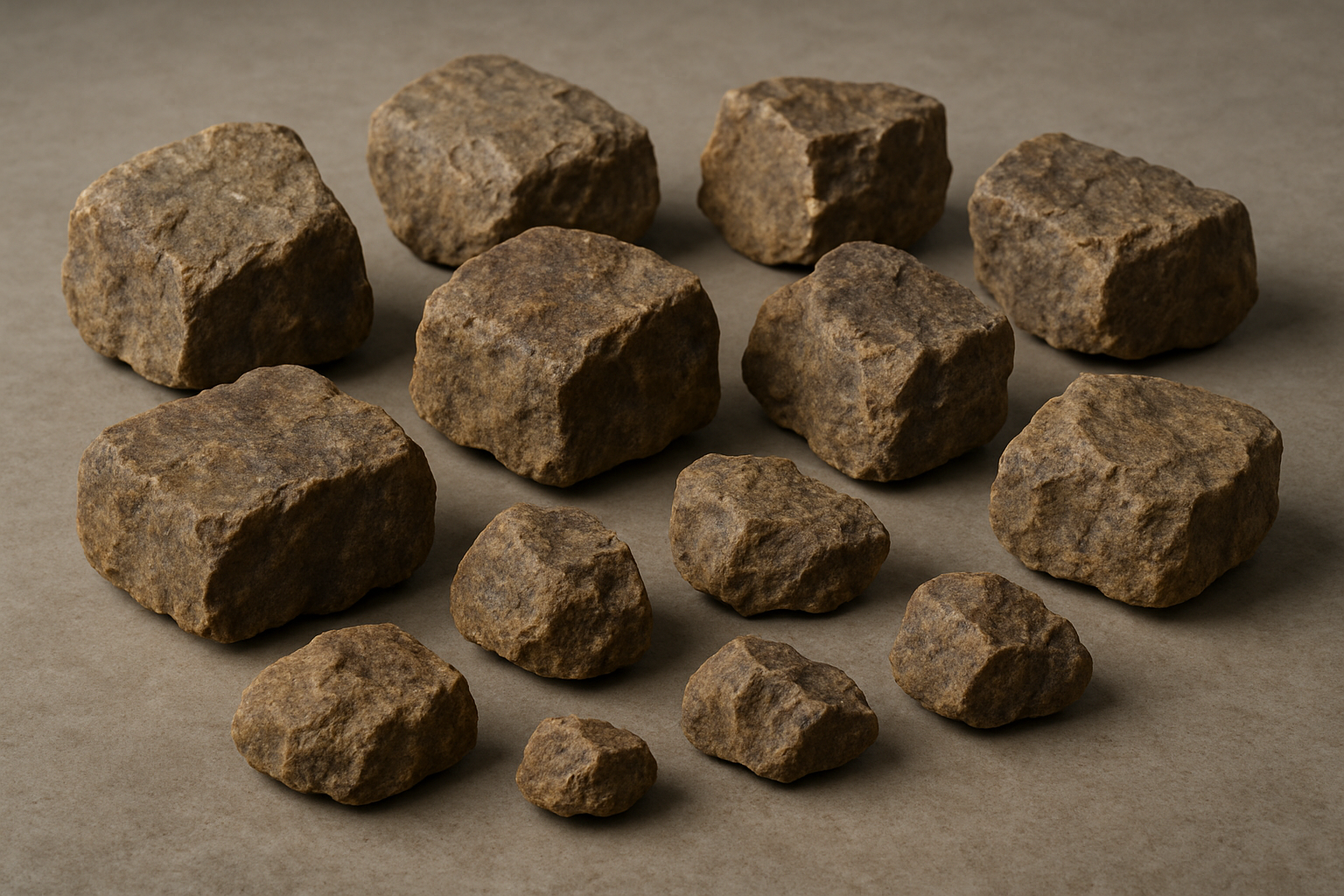Phosphate
Phosphate is an inorganic compound derived from phosphoric acid, extracted from the earth, and considered one of the basic natural resources. It is widely used in agriculture as a fertilizer and in many industries such as the chemical and food industries.
Specifications and physical properties of phosphate
Phosphate rocks occur in nature in several main forms, namely:
- Sedimentary phosphate rocks: These are the most common and widespread, formed by marine sedimentation in phosphorus-rich environments.
- Phosphate rocks of igneous origin: These are formed as a result of volcanic activity and are less widespread than sedimentary rocks.
- Carbonatite and pyroxene rocks: These contain varying proportions of phosphate and are formed in specific geological environments.


Extraction, mining and processing of phosphate for industry
Phosphate is extracted from the ground using the surface exposure method, which is the most common method and involves removing the soil covering the phosphate layers. The process is carried out in the following stages:
- Removal of the soil cover: This is done using specialised equipment such as excavators and heavy machinery.
- Extraction of the ore layers: After removing the cover, the phosphate layer is dug up and broken up using blasting or drilling machinery.
- Transport of the ore: The extracted phosphate is transported to crushing and processing units using trucks or conveyor belts.
- Crushing and grinding: The phosphate is crushed into sizes suitable for washing or flotation.
- Processing: The phosphate is purified of impurities through washing, drying, and sometimes flotation to obtain a final product of suitable quality for industry or export.
These processes aim to prepare phosphate ore for use in agricultural, chemical and other industries.
Extraction stage
The process begins with the blasting stage, where the overburden covering the phosphate ore is blasted away. Next, heavy mining machinery is used to collect the extracted phosphate. Finally, the phosphate ore is loaded and transported to crushing or storage sites in preparation for the crushing and processing stage.
Crushing stage
The phosphate ore is crushed into small pieces using crushers. It then undergoes a fine crushing stage to obtain more precise sizes. The output is sorted according to the required size using special screens to ensure that it meets the requirements for processing or end use.
Processing stage
This stage aims to improve the quality of the phosphate ore and remove as many impurities as possible. Work is done to increase the calcium triphosphate (TCP) content to increase its industrial value. The processes include washing low-quality phosphate to increase its TCP content and reduce the proportion of unwanted materials.
Phosphate uses
Global phosphate production is estimated at 240 million tonnes per year, while global reserves amount to approximately 69 billion tonnes. These figures highlight the significant importance of phosphate as a strategic resource used in a wide range of industries, most notably:
- Semiconductor industry
- Fire-resistant clothing
- High-tech electronics
- Ceramic processing
- Cosmetics industry
- Animal feed production
Phosphate is used as a key ingredient in many common household detergents, such as laundry detergents and dishwashing detergents, due to its effective role in breaking down dirt, softening water, and improving cleaning efficiency.
Phosphate is added as a food additive to many manufactured products such as sauces, baked goods, and soft drinks. It is also used in most canned, frozen, or pre-cooked foods to improve texture, enhance flavour, and increase shelf life.
Phosphate is used in the manufacture of many medicines and pharmaceutical preparations, especially those related to oral health, such as tooth creams and toothpastes, due to its cleaning and protective properties.
Phosphorus extracted from phosphate rock is used in the manufacture of fireworks, where it produces dazzling light effects when burned, making it an essential ingredient in various celebrations and events.
Phosphate plays an essential role in the manufacture of paints and water-based coatings, where it is used as a necessary material to improve the properties of the coating. It is also used in the composition of polishing materials, especially those intended for polishing aluminium and its alloys, due to its effective role in giving surfaces shine and additional protection.
Phosphorus is extracted from phosphate compounds found in sedimentary and volcanic rocks, and is an essential component in the manufacture of agricultural fertilizer. Compounds such as ammonium mono-phosphate, ammonium diphosphate, super-phosphate mono-sodium, and super-phosphate trisodium are used in the composition of plant fertilizer. Phosphate is also used in the production of phosphoric acid, which is in turn used in the manufacture of fertilizer and soap.
Phosphate is indispensable in this field, as phosphate and phosphoric acid are used to purify water and improve its quality. Phosphate compounds help prevent pipe corrosion and control mineral precipitation, making them an essential component in drinking water treatment processes.

